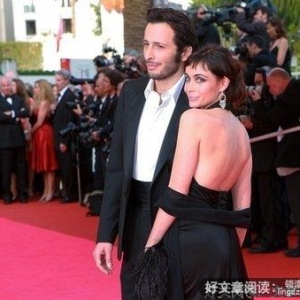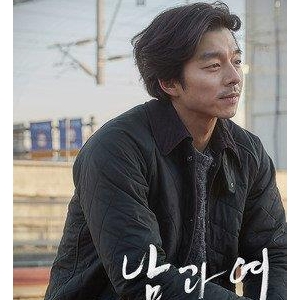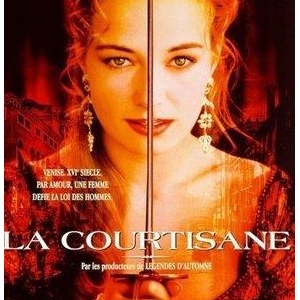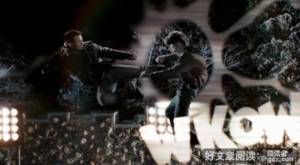
《影子》是一部由约翰·卡萨维茨执导,本·卡鲁瑟斯 / 莱丽亚·古多尼 / 休·赫德主演的一部剧情类型的电影,特精心从网络上整理的一些观众的观后感,希望对大家能有帮助。
《影子》观后感(一):就像一部爵士剧那样
片子的开头令我想到的是戈达尔<精疲力尽>里,一个墨镜,一切随意的镜头,a遇见b,b的妹妹和c是男女朋友关系,c与a当中的一个朋友认识,在电影发生的地方显得比较的小,只有那人群居多的小酒吧,镜头的移动也不太灵活像有一幕是三个人出现在小房子里,移动得像人在等摄像机那样...
《影子》观后感(二):即兴表演与电影生活
卡萨维茨的电影总让笔者望而却步,这次静下心来重新看了一次《影子》,却发现没有想象中的无趣。虽然大多数人都对电影中的即兴演出称赞不已,但笔者却对即兴的行为本质更感兴趣。
电影没有交代前因后果,仅仅是抽取主角三人的一部分生活,并将之呈现在银幕上。但卡萨维茨却通过几个小事件就将兄妹三人的性格刻画出来。如大哥在夜店表演的窘迫,二哥在街头混迹的迷茫与暴躁,小妹因种族问题而遭遇无疾而终的恋情。三人各自通过一次经历体现出自己的困境,又通过三人彼此的关系而将气质的矛盾交织在一起。
如果按常规电影套路出牌,其中的矛盾可能会被无限渲染及夸大,突出人物的困境或寻求救赎。但卡萨维茨并未如此处理,他只是静静看着主角三人遭遇了一些问题,并用摄像头冷静地观察他们如何应对,其中没有任何的来自导演的干预。这是“自然主义”在电影上的表达,也是演员即兴表演的真正意义所在,他们在银幕上创造了真实的生活片段。
因此,观众面对主角们的“真实”遭遇及反应,电影营造的情绪很容易触动观众,并左右着观众们的情绪。电影情节平淡的不能再平淡,矛盾扩大了吗?好像没有,不快的情绪都随着时间的流逝而被抛诸脑后。问题解决了吗?好像也没有,这些事情就安静地消失在银幕,并进入了真实的观众生活。电影虽然结束了,但是电影所刻画的生活还在屏幕中延续,这是卡萨维茨所做的一次小实验,简单而有趣。
《影子》观后感(三):这更像是一个学习笔记
作为美国独立电影标志性电影,电影的形式远比故事本身更让人感兴趣,课上有同学问当时的观众对于这样一个先锋的主题是怎么看的,金发老师说,当时整个评论界观众都被cassavates关注的‘即兴发挥’的表现方式震惊。c'est dommage!虽然cassavates想要摆脱当时好莱坞电影模式的约束,并且在实践了他的想法的过程中呈现了一部很有意思的电影,但是这种freestyle表演方式对于我来说却并不是一个多么值得坚持的事情。
当然在他的时代,happening这个词意味着reality,但是现实永远都是充满谎言的,更何况是由。人。选择出来的现实呢!
金发老师显然是mekas的铁粉,但是我却好不喜欢mekas,凭什么独立电影就要穷一辈子,虽然mekas不是虚伪的人,一辈子践行自己的主张。
但是难道判断是不是独立电影的标准就是看你预算多少吗?
(我知道你是在那个时代和那个行业状态下不得不极端)
但是cassavates即便有人投大钱也没变的商业啊。
本片是cassavates拍的第二个版本的shadows,第一个版本是什么样只有当时的2000观众知道,然后就被C毁掉了。
金老师怎么说的忘了。
说到电影本身,排除演员即兴发挥完成电影这一点之外,情节本身也很有趣,lelia作为女主,人物还挺饱满的,她调教黑人男舞伴的那一场看的我快被lelia气死。。
因为是即兴发挥,所以有一些场景有一种镜头迁就演员的感觉,和哪里差一点的感觉。
但是正因如此,cassavates实现了他想要现实。
《影子》观后感(四):无因的反叛与身份认同
卡索维茨的野心不光体现在影片的即兴创作,影片的故事不光融合了50年代末最重要的故事类型(叛逆青少年、垮掉的一代)甚至还有鲜有涉及甚至禁忌(但已不可忽视)的种族与身份话题。电影看似不经雕琢,实则具有强大的真实性与力量。出自卡索维茨的真实经历,我更愿相信片中的Ben就是他的化身,空虚、孤独、困惑、愤怒。卡氏才是真正的反叛者。相比之下,不论是迪恩的无因的反叛还是白兰度的飞车党都显得虚假与干瘪。
哥哥作为过气艺术家 为糊口不得工作于下三滥酒吧 等待着重出江湖的机会 又不愿承认自己的嗓音状况早已每况愈下; 以为自己仍然是这个家庭里的大家长 实则与自己弟弟妹妹的关系已是千疮百孔 越发疏远
妹妹执拗困惑外强中干 带着某些幼稚的独立 实则是三人中最无助的 身份问题在她身上体现的最为明显 不知道如何选择自己的族群 她的格格不入也与弟弟Ben极为相似。同样是没有身份认同感 但Ben困惑更多地体现在对生活与成长的不解,不愿意过安稳的日子;不愿意工作;不愿意成长;以及--同样地--不愿意(抑或格外渴望)被任何一个集体接纳,不论黑人还是白人。
也许大哥在芝加哥会混得小有名气?也许妹妹会爱上自己羞辱过但仍不离不弃的黑人?也许Ben会找到一份安稳的工作,勤勤恳恳兢兢业业?
导演暗示三人的结尾还都是积极的,但是很难不让我们猜想他们之后的生活会是什么样子,因为卡索维茨是一个永远不会给我们讲“公主与王子从此过上了幸福快乐的日子”的故事的导演。
最终大哥与他的经理继续(无望地?)追逐星梦;结尾暗示妹妹虽然选择了黑人群体,但身份认同问题也许还将继续存在;而Ben从头到尾表现出来的格格不入与不协调--不论是和自己的哥们,还是在黑人或白人的聚会中--也预示着以后的coming-of-age,质同费里尼的浪荡儿,他也是几个哥们中唯一个面向成长的人。Ben最后孤独地走在街上,看似他抛弃了自己的死党,实则是被所有人抛弃了。
2015年5月12 第二遍 我认为这是我看过的最好的电影之一。
《影子》观后感(五):自由落体
约翰•卡萨维茨被视作美国独立电影宗师,而《影子》是他的发韧之作。这部电影拍摄于1959年,里面有很多的即兴成分:场景就搭在他的工作室里,演员都是朋友——连名字都不换就进了电影,灯光也尽量接近自然。女演员莱利亚•戈尔多尼在2004年的一次访谈中说,导演一般只规定一个大体情境,然后演员自由发挥,多拍几次,从中选择剪辑。大部分场景在1957年拍成,1958年又补拍了一些(莱利亚的回忆在时间上稍有出入)。最终剪辑出来的电影,虽然不是一个紧凑好看的故事片,但并没有象一些先锋电影那样取消情节,而是在三个文艺青年茫然失据的生活中,套着一个女孩子的初恋故事,称得上完整与动人。因此,这个电影虽然是用16MM胶片拍成,但转成了35MM格式在电影院播出,颇得媒体好评。
今天来看这个半个世纪前的电影,觉得它的电影语言几乎没有任何的“过时”之处,技术手段虽然较为粗糙,但是约翰•卡尔维茨在他的第一部电影作品里,就显然是一个成熟的艺术家,并且树立起电影语言上的个人风格。——就这一点而言,中国当代的独立电影,多数是一些青年学生习作,在还没有形成深入的世界观与审美观的基础上就急于通过独立电影的形式来表达自我,难免在形式与思想上都欠成熟。约翰•卡尔维茨在成为导演之前,已经是一个优秀的演员,虽然他把这部电影作为即兴之作,不指导与限制演员的表演,却能够创造出合适的场景与气氛,使演员最好地呈现出真实的反应与情感。而他用了很多的面部特写,往往在简单的背景交待之后,直接将镜头对着演员的脸——这种直接的方式在他的电影里运用得非常自然,摄影机那么逼近面孔,逼近内心,却几乎没有一点侵略性。
莱利亚在电影中间非常美,那一年她十八岁,到纽约时想进约翰•卡尔维茨的学校学习,没能钱付出学费,说她可以用教舞蹈来交换,而约翰•卡尔维茨让她进入了这个团体,担任女主角。电影里的利拉美丽,年轻,似乎胆大妄为,其实对自己的身体与爱(不是对哪个男人的爱,是对爱的想象)都不知道如何处置才好,但这个折腾着成长着的女孩子,依然美丽得像一朵初开的玫瑰花,让人们不能不爱她。
虽然大部分的场景是室内搭的布景,但几段外景都拍得相当优美,——公园草地上两个刚刚遇上,刚刚开始恋爱的年青人跑过的片断,利拉一个人走过街头回家的片断,还有三个年轻人在街头,一个一个走出画面的镜头,它们对于电影的节奏起了很好的作用,象是几次深呼吸。——约翰•卡尔维茨有幽默感,但是更忧郁,但归根到底,他的片子拍得直接真诚,把所有混乱狂暴无奈无知和盘托出,虽然有一点感伤,却又超越了感伤。
《影子》的最初16MM版本已经找不到了,现在DVD版是用35MM复制版修复而成的,在花絮中有一部分记录了加州大学柏克利分校的老电影修复部门对这个电影的修复过程,很值得一看。
《影子》观后感(六):影子·劇本練習
一個多色人種混雜的家庭有兄妹三人,休、班尼、妹妹萊利。
休是一個黑人爵士歌手,他的音樂不受人待見,雖不甘心,為了生活也只能接到幫妓女列隊場開場曲的工作。
妹妹萊利才二十歲,美麗開朗的她是個文藝少女,無論在哪都受到男人的追捧。在一次文學聚會上,萊利遇見了年輕帥氣的托尼,帶著一種涉世未深的輕浮與幻想,她接受了托尼的追求,并發生了關係,但萊利漸漸發現托尼對自己的追求有著一種逢場作戲的風月氣息。托尼游移不定的情感在他知道了萊利的哥哥是個黑人以後產生了動搖,使他離萊利而去,傷透了她。
班尼是與一群夥伴混跡街頭的叛逆男孩,他欠錢喝酒、泡妞,對文學和藝術不懷敬意,脾氣暴躁,無所事事。一次班尼一夥在酒吧勾搭女人時撞上了另外一幫人,雙方打了起來,班尼一夥慘敗。夥伴散去后,班尼獨自一人在街頭行走,消失在街道中。
1、班尼有了20美元,和同伴一起去酒吧
2、酒吧裡,眾人和女伴調情
3、班尼去找哥哥休,休接了一個活,為妓女列隊唱開場曲,但他十分不樂意
4、班尼向休要20美元還酒債
5、妹妹萊利在火車站送休,休囑咐萊利打的士回家,以免遇到壞人
6、萊利依然走路回家,被一個男人跟蹤,但擺脫了
7、休到了工作的地方,仍然不願為妓女唱開場曲,經紀人教他說一些笑話
8、開場后,休唱到一半就被強行打斷,連笑話也沒來得及講就被打發下台
9、萊利和哥哥班尼一夥人在一起,萊利要參加晚上的文學聚會,她嘲笑班尼一夥人學識淺薄
10、班尼一夥在當代藝術館看雕塑,一番爭論
*11、在當晚的文學聚會上,萊利遇到一個小白臉托尼,親了他。
12、翌日,萊利和前男友、托尼一起去公園,托尼沉寂甩掉了前男友,二人來到了托尼家中
13、托尼與萊利發生性關係,才發現萊利是處女。當萊利問托尼是否應該同居的時候,托尼的遲疑態度傷了萊利的心。萊利打車回家,托尼也跟了上去
*14、萊利家中,托尼與萊利正親熱,哥哥休回來了。托尼發現休是個黑人,便以他另外有約為藉口要抽身離去,萊利十分惱怒。休把托尼趕走,并安慰萊利
15、翌日,萊利心情頹喪,朝班尼發火。
*16、晚上,休在家中舉辦聚會,一個叫大衛的黑人試圖勾引萊利,約她出去,但萊利故意不給對方台階
17、班尼惹惱了一個嘗試勾搭他的黑人女人,打了起來,班尼離去
18、聚會結束,休與一個女伴抱怨弟弟班尼
19、班尼回家后,與休爭執,但和解了
20、大衛上門邀請萊利跳舞,卻受到萊利一家人的冷遇,等了兩個小時
21、萊利和大衛離開的時候,小白臉托尼出現了,托尼希望萊利原諒他
22、跳舞中,大衛質問萊利的無理,并指出了她囂張外表下受傷的心,萊利不語
23、休和經紀人在車站趕赴工作地點,因為休的性格,他們的下一個工作泡了湯
*24、班尼一夥在酒吧勾搭女人,卻撞上了另外一幫人,雙方打了起來,班尼一夥慘敗
25、班尼對同伴說他不願再這樣下去了,同伴紛紛離開,只剩班尼一人在街道上行走。
《影子》观后感(七):美國獨立電影的末世啟示
我慣讀的幾個英、美部落格,最近討論得比較火的一個話題,是「獨立電影是否已經玩完?」(http://blogs.guardian.co.uk/film/2008/07/the_view_is_it_all_over_for_indie_cinema.html)
事緣美國 獨立電影導演尊•奧古斯(John August)去年初被辛丹斯電影節選中放映的作品《The Nines》幾經波折,終獲排期公開放映,但僅及一周即匆匆下片,票房總收入不到十萬美元 。苦惱的奧古斯在他的部落格裏撰文大吐苦水,表示「早知今日,何必當初」。整件事件的啟示是:獨立電影的最佳出路,是直接發行DVD,戲院發行一途是一團屁話。最後他提出了一個問題:Should anyone bother making an indie film? (http://johnaugust.com/archives/2008/nines-post-mortem)
其他引發討論這個話題的事件,還包括幾家荷李活 片廠旗下的「另類/小眾」子公司如Picturehouse、Warner Independent、New Line、Paramount Vantage 等,不是結束營業,便是大量裁員;專門發行記錄片的ThinkFilm公司被控告沒錢支付廣告費(根據美國電影協會MPAA統計,在北美發行一部獨立片的廣告費去年飈升了60%)、英國 最活躍的藝術電影DVD發行公司Tartan Video(在美國也設有分公司)突然宣告倒閉、美國最大獨立電影發行公司Miramax前製片家Harvey Weinstein連番失利,財政狀况被公開質疑、歷史悠久的獨立老影院相繼關門大吉等。
另一段為(美國)獨立電影敲響喪鐘警告的說話,是來自「洛杉磯 電影」的一個有關電影融資的會議上,Miramax公司前主席Mark Gill高呼《天塌下矣!》(The Sky Is Falling)的一段「宣言」:「三年前,每年送往辛丹斯參展的五千部電影裏──一般成本都在一千萬美元以下──也許只有一百部是可以在本土獲公開發行。其中約廿部可以賺到錢。在今天則可能只有五部。那是1%的十分一。換句話說,如果你想自資拍一部成本低於一千萬美元的電影的話,你的失敗機會是99.9%。」
這段文字的邏輯性無疑很有問題,但奧古斯到最後卻不能不承認它還是有它的真確性。他自己做了另一份統計。跟《The Nines》同年參展的電影中,約有廿部是被傳媒和評論廣泛報道,而且也在影展中爆滿兼加場放映的。它們都被發行商買下了版權,其中五部賣座不錯(由1,800萬到800萬),但其他電影的票房卻全部插水,沒能賣超過十萬美元。
那一年,有3,287部片被送辛丹斯,112部獲選展出。(之一)
舒琪
《影子》观后感(八):如影随影的身份焦虑
87分钟,Cassavetes用大量即兴镜头尝试谈论一个永恒而严肃的主题:身份认同的困境。
他借片中的一次文学聚会,引用了存在主义的立场:man, in contrast to other animals, is conscious of existence. Therefore, man is conscious of non-existence. Ergo, he has anxiety.
这个主题落在三位主角Ben, Lelia, Hugh身上,出现了双重或多重的困境复杂性,并因为三人不同的自我意识及亲密的相互关系而具有了分叉与叠影。
他们皆以本名出演,组成了一个仅有三兄妹的美国黑人家庭。他们即是这个家庭的全部,除此以外没有任何其他的家族背景。这并无妨碍,他们可被追溯的背景,便是这个种族可被追溯的背景。黑人身份,是他们三人的共同点。人们清楚地知道,他们最早从哪里来,曾经在南方经历过什么,现在(1959年),不管是在南方小镇还是纽约芝加哥,他们正在经历什么。这样,他们代表的便是20世纪50年代末的那整个群体。而当他们三人出现在这里时,只是这个黑色整体中偶然被光线扫过而浮现了片刻的几个散落个体。更多的个体,存在于光线未及之处。或者,用“存在”来描述是否准确?他们三人,或者更多的他们,invisible or not?
用invisible来定义美国社会中黑人的身份存在,来自Ralph Ellison的笔端。1952年(此片上映前几年),Ralph Ellison耗费7年之久写就的<Invisible Man>正式出版。这部一经问世便享有广泛赞誉的黑人小说,不仅在当时产生了重要影响,后来也成为美国文学史上的重要一笔。他从存在主义的角度讲述了一个籍籍无名的黑人,“我”,在社会中因种族问题遭遇的身份模糊和丢失,直至最后为了躲避灾难逃入地下室,隐匿为一个invisible的符号。
如此,处于接近的历史时期(二战后50年代虽陆续发生了一些黑人抵抗运动,但后来60年代大规模的黑人运动尚未到来),invisible是他们兄妹三人身上各自皆具的第一重身份认同的困境,成为一个困境的叠影,同时也是所有黑人的困境叠影。但这种困境在他们三人身上产生的焦虑程度并不相同,加之由于自我意识的不同,他们更多的困境是分叉的。
Hugh是家中的老大,是唯一一个真正具有黑人面孔的家庭成员,也是唯一一个make money的人(妹妹Lelia在喝斥黑人男友时说出的信息)。他是一个爵士乐歌手,跟着同为黑人的经纪人四处找演出。他总是在坚守理想底线和供养弟妹的现实间作着艰难的平衡。他的形象的意义更像一位父亲,他为弟弟的无度消遣买单,担忧妹妹失败的初恋,教训伤害她的白人男友,而他们俩回报以夹杂着叛逆与任性的依赖;同时,他纯正的黑人外表,也以一种父亲的意义在时刻提醒white-looking的Ben和Lelia他们血液的根源。他的焦虑意识中,黑人身份带来的困扰并不明显,对于这个身份他是泰然处之而几乎没有困惑的。因此在Ben向他询问Lelia为何情绪失控时,他的回答是“nothing, just a little problem","just a problem of races, that's all";在经纪人为他们的演出机会被挤兑,为在美国遭遇到的不公正而恼火与沮丧,扬言要去巴黎和非洲演出时,他坦然地安慰对方,鼓励他继续一同前进。相反,他更多的焦虑来源是家庭身份的寻求——父亲角色的扮演,他爱他们俩,想保护他们,但又并不知道怎么做是恰当的,怎么做可以获取他们的认同,他并不懂得他们俩的意识与内心之中与他不相同的那部分所带来的困境。
Lelia,和Ben一样,都有着白人面孔,这种混血黑人的特殊身份使他们比哥哥多了一重身份的困惑。比较极端的一个例子,是福克纳在《八月之光》里塑造的主角之一Christmas,因被疑为是黑白混血而失去了身份,被种族主义者的外公在圣诞节送进孤儿院,从此受到种种虐待与遗弃,最终杀死了白人情人后又被白人处死。这一类人的身份困惑在于,当他们发现自己的样貌并不是自己的身份时,他们的迷失便随之而来,也从此挥之不去。当他们企图与白人待在一起时,发现真相后的白人会唾弃他们,当他们决心做一个黑人时,纯正的黑人们又像躲避白人一样躲避他们。这种困惑在他们意识中的形成与加固,有着不同的显现。表现在Lelia身上时,直到初恋的白人男友发现真相而借口离去后,她的这种困境意识才达到了高度的清晰,在此之前她一直快乐地穿梭于哥哥及他的黑人朋友们之间,而在自己交往朋友的时候,由于她的外貌及本能,她相处的都是白人,她也因相貌和性格受到他们欢迎和追捧,这甚至给她带来了虚假的优越感——在白人女友为她介绍黑人男友时,她的态度可见一斑。以及之后对待他的种种表现,也被描述为"show off the masculine"。后来,她在与他共舞时,黑人男友告诉她:“ I saw the way he looked at you back there, I also saw the way he looked at me." 她终于把头低了下来,在他肩膀上寻求慰藉。但她身份迷失的焦虑有被减轻吗?她和黑人男友是否相同?
en的身份困境的多重性是更复杂的,他和哥哥Huge一样清楚地知道自己的黑人血液,和妹妹Lelia一样因为white-looking而在身份意识上更为迷失,同时,他也是二战后beat generation的一份子,他无所事事,总是穿着皮衣带着墨镜和朋友在酒馆买醉,在大都会博物馆讥讽艺术作品和大学教授……但他并不拥有像凯鲁亚克所说的那种感觉——"everything belongs to me because I am poor." 种种困境的叠加,他始终未能找到答案与出路。尽管他一直很努力地寻求一些认同:在白人男友赶来向Lelia道歉时,遭到了Huge的责骂与驱赶,但向来冷漠旁观的Ben上来阻止,他说“It's our problem”,他重复着对方的道歉:“There's nothing different between us." 有时他也跟哥哥说想找一份工作(有一次他骗一个酒馆的姑娘说自己是musician),有时他也想有个自己的姑娘,但他看到了哥哥与妹妹在工作和爱情上由于黑人身份而遇到的失败,他知道自己无法像一个normal type一样生活,他和朋友在酒吧与人干了一架之后,钻进了纽约的夜幕中,穿过街上的车流,在一个接一个的橱窗边经过,不知向何处走去。这是一个非常新浪潮的结束镜头。
在他穿着皮衣孤身走远的最后一个镜头中,背景响起的是爵士乐,他们血液中的音乐。
《影子》观后感(九):从曼哈顿46街到时代广场
作为电影明星,约翰•卡萨维兹(John Cassavetes)是一个动作粗鲁,眼神凛冽,满脸坏笑的恶棍形象。他以充沛的活力与极具爆发力的动作,一双精明狡黠的大眼睛和一张大豁嘴(David Thomson将他比作“鲨鱼”),在《十二金刚》(The Dirty Dozen 1967)《罗丝玛丽的婴儿》(Rosemary’s Baby 1968)《狂怒》(The Fury 1978)中扮演着令人颤栗的暴怒而潜藏狠毒的角色。不过,他也演过好人,像1959年那个电视系列片《Johnny Staccato》里的钢琴家侦探,这个模仿真人短片《Peter Gunn》的电视剧让他还清了《影子》(Shadows)的全部4万美元债务。不过即使他演的是个英雄,看上去也无精打的。○1
和奥森•威尔斯(Orson Welles)一样,卡萨维茨按照好莱坞的游戏规则在圈内当演员,但却在这个工业体系之外作导演。而与威尔斯有点不一样的是,卡萨维茨从没有被人炒作过;直到今天,对他电影的评论还是很难找到温和派。要么很喜欢,要么就很讨厌。2002年,UCLA的实验室从一堆沾满尘埃与灰屑的胶片中重新修复了他1957年和1959年拍摄的16mm与35mm两个版本的《影子》,即使这部耗费两年时间千辛万苦修复后的电影画面上依旧残存着令人沮丧的头发丝和惨不忍睹的声画分离,但丝毫不影响人们重拾对约翰•卡萨维兹作品的热情,以及小部分群体对他这个“60年代美国独立电影运动宗师”头衔的滥誉与膜拜。相较之下,我则更喜欢称他为“爱的传教士”,“我要求角色真切地去理解爱”,他说,“这便是我唯一感兴趣的——爱,以及对爱的需求。”
《影子》便是这种观念的绝佳例证,很难说清片中究竟讲了一个怎样的故事,它忠实地展现了纽约这个城市中以虚无主义姿态呈现的各色人等,那是一个属于温情爵士乐、存在主义论调、离群索居者和种族联姻的时代,三个两白一黑的兄妹,Ben身着跨掉一代的标准装束,在咖啡馆摆出詹姆士•狄恩的架势——人群中的孤独者,和他的哥们整日泡妞嬉闹,在现代艺术馆闲逛然后神侃一番,而故事的中心却是他的黑人哥哥Hugh,一个以为妓女领唱而耻辱的Billy Eckstine风格的爵士歌手(卡萨维兹曾经的影子),以及与他们的妹妹Lelia的关系,加上她那个软骨头小白脸男友Tony。从来没有看上去如此不般配的兄妹,然而他们又非常奇怪的令人信服,实际上,这种种族窘境并未给电影带来太多意识形态上的波折,甚至可以说卡萨维兹关心Lelia不愉快的初夜胜过种族婚姻问题。这也是这部电影如此动人的主要原因,电影里没有英雄,没有坏蛋,没有线性发展的情节,没有精心设计的悬念,没有事先安排的戏剧效果,也没有那么多的性爱与暴力。如同任何一部诚实的作品般,《影子》只是在说,虽然身边的世界在变,而人们的生活依旧残酷如常。
但1959年第二版本的《影子》上映时,却遭到不少评论家的大肆批驳,譬如德怀特•麦克唐纳(Dwight MacDonald)曾这样指责,“尽管现在这部电影的晦涩和‘诗意的写实’持平,不过我对这种讨巧抱有成见,所以我觉得有理由相信导演是江郎才尽了。”尤其是当电影在结束时打出“The Film You Just Seen Was An Improvisation(你刚所看到的电影为即兴的成果)”的字幕时,更是激起了一群古典主义批评家的愤怒,因为他们从文本的阅读训练出来,不能接受对任何非成文定则化的偶然创作的“挑衅”。对此,卡萨维兹毫不介意,还将这部电影定义为“彻底的知识分子电影,所以没有亲和力。”,予以还击。而实际上,在拍摄《影子》之前,卡萨维兹在纽约的曼哈顿46街成立了一个Variety Art工作坊,里面大部分没有表演经验的演员日久年深,相互之间就建立起了一种关系,于是激发他通过广播来集资拍摄一个反映时下生活的独立影片。即使这部惊人粗糙的低成本制作,对大部分观众来说是惨不忍睹,不过也有评论界和知名电影人说它是个杰作。然而对卡萨维茨来说,银幕只是他的一个中转站,这会激励他去做更加有力,风格更加统一的电影作品。换句话说,正是这种即兴方式让他明白了即兴创作的局限性。
更令人吃惊的是,卡萨维兹其实一直是在利用剧本来创作的,直到后来完成的《面孔》(Faces 1968)更是出版了一本厚达三百三十页的剧本集。重看《影子》时便不难发现,卡萨维兹居然如此注重对白,从Dennis在现代艺术馆前说的那句“You couldn’t be wronger”到后来聚会上那两个女人对于存在主义的讨论,“You suffer from Self-induced Hysteria at the word Existentialism,.Are you aware of that?” 还有Rupert和Hugh那种心照不宣的互相调侃,以及Lelia经历了糟糕的第一次性经验后说的那句“I never thought it would be so awful” ,女演员Lelia Goldoni在后来接受采访时更是表明,“我永远都不会有勇气创造出那样的台词,你知道,那是在保守传统的50年代,性被看得浪漫,而当时能够说出这种话的,只有约翰。”
正如卡萨维兹的知音影评人Raymond Carney后来在他的那本《美国梦》里一针见血地指出:“观者接受不来的并非即兴技法本身,而是关于对即兴的印象而已,问题并非为卡萨维兹无力利用即兴技法来提供以及刻画细节,而是他创作出来的世界令影评人感到不妥而已。”○2
“这世上没有所谓的好演员,演戏就是生命的一种延续,你可以如何成功地于生命中演出,也代表了你可以怎样成功地在银幕上演出”,卡萨维兹口中的即兴表演,并非是演技上的一种手法,而是一种生存处境的即兴姿态,正如《影子》中,如同街头路人一般的演员的结结巴巴,别扭纠结的不俐落演出,其实是他们已经进入一种不愉快人际亲密关系后的即兴处境中,成就了令人过目不忘的即兴生活剧场。
重要的并不是这种极端的延续,而是如何不动声色地从“态度”到“姿态”的过渡、布莱希特(Bertolt Brecht)创立了“姿态”这个概念○3,并把它变成一个不受情节或者主题限制的戏剧灵魂:他认为姿态必须是社会性的,尽管他承认还存在其他类型的姿态。但前提是它不隶属一个先设的故事,一个先存情节,或者一个动作-影像。相反,姿态是角色状态本身的延续,并在这个意义上,直接实现且隐秘的戏剧化过程,因为这种过程独立于所有角色。
这便是卡萨维兹的伟大之处,他拆解了历史,故事或情节,甚至是空间,他说人物不应该来自故事或是情节,而是人物分泌故事,人物受限于自身躯体的态度,而应从中提炼的,是姿态,是“戏”,某种戏剧化或情节化,任何情节都不可或缺,而《影子》正是通过黑人和白人的态度,展示着围绕黑人-白人态度的社会姿态,这种姿态孤独,没有选择的可能性,濒临消亡的边缘。电影里的人物在本能上相互理解着,由一个一个的动作,一个一个字构成,他们在故事的发展中被制造出来,对他们的拍摄如同对他们的揭示,故事的每一个进展都给他们的行为提供一个新的发展。
在卡萨维兹获取影像的普及方式中,事情从哪里结束,另一件事情从哪里开始,界限是什么,如何能看到它,都需要不断地超越和移动。当摄影机从人物身上获得构成真实的过去或未来,虚构已经形成;当描述变成纯粹的,纯视听的,叙事成为虚构的,述说变成模拟的,整个电影成为在自由中运作的间接话语。虚构者和他的力量,电影人和他的人物,或者颠倒过来,他们生存在这样的团体中,他们也可以说,“我们是真实的创造者”。
卡萨维兹在《影子》上映时这样说道:属于电影的东西,是对人的关怀,对“人类问题”的关怀,而不是对影片和导演问题的关怀,这样,人们就不致于站到摄影机的一边,而摄影机也不致于站到人们的一边。
他曾被称为“美国戈达尔”,但将《影子》和《筋疲力尽》(Breathless)这两个同摄于1959年的电影做个比较就能悲伤地发现,后者实在太光鲜了,光鲜得令卡萨维兹不免显得有些黯然失色。但多年之后,他仍然称《影子》为“我最喜爱的作品”,因为这是他的首部作品,也是他两年卓有成效的即兴创作后完成的两个不同版本的结晶。而对于当年那群在Variety Art工作坊里的年轻演员来说,“我们从这里开始了这个疯子的旅程”。2004年,女演员Lelia Goldoni在洛杉矶的家中回忆起约翰•卡萨维兹,想起她当18岁时第一眼见到这个“Crouch Creature”——他像只猫一样蜷在房间里,或蹲在地板上,却始终敏锐,全神贯注地观察着他们表演中的每一个细节。“无意识的表演是最好的,他给人以灵感”,Lelia在访谈的最后说道,“不管别人有没有拍过像约翰那样的电影,那都不重要,重要的是他踢他们的屁股,让他们做应该做的事情。这就是他对别的艺术家提出的真正的挑战,那就是找到你自己的方法,做你自己的事情,我说的不是很庸俗的那种,因为约翰总是要拍出很有力量,也非常真实的东西,他在拍摄每一部电影的时候,都在寻求如何表现真实,这个时刻的真实,这个角色的真实,这个情景的真实。伙计,你不可能做得更好了。”○4
那一年,约翰•卡萨维兹去世15周年,大概因为他没办法继续活下去。通常这就是人们死掉的原因,你可以说癌症,心脏病或倒在车轮下,可是通常真正的死因,是因为他们无法再活下去。
他的影像始终饱含着过去和未来,有控制的自由落体,尤其是他电影中鲜有标志,而你却惊讶地发现在《影子》中他似乎对纽约时代广场的电影院有着浓厚的兴趣,你看,当年正上映着电影《最快乐的小伙》(The Most Happy Fella)的海报下站着Ben,挥舞着手里的20美元钞票,Lelia无意识地徜徉在一片电影胜地,那里正在上映40年代Errol Flynn的两部战争电影《裸露天堂》(Naked Paradise)和《裸体非洲》(Naked Africa),和一个巴铎主演的艳情喜剧《要么男人,要么枪》(Man or Gun),随后她消失在《女孩公司》(Girls Inc)的阴影中。沿着《一万张床》(Ten Thousand Bedrooms)走过去,而Tony则在《高度机密》(Top Secret Affair)的广告牌下打着电话。你再也无法希冀一个对Nelson Algren○5所谓的《Walk on the Wild Side》比电影结尾Ben的镜头更加贴切的形象描绘了:他孤单一人,披着灰色的衣服穿行在夜色中,渐渐被时代广场的喧闹声所淹没——对于卡萨维兹希望消灭的那些电影来说,这里是一座坟墓。
《影子》观后感(十):Shadows: filmmaking as framing incidents
hadows: filmmaking as framing incidents
y Aimée
John Cassavetes’ Shadows (1959), with both the conception and the style indebted to neo-realism, offers a humanistic description of interracial friendship and romance in Beat-Era New York City. Shadows features the story of three African American siblings, two of whom are light-skinned and often pass for white. Although Douglas Sirk’s Imitation of Life (1959) has a superficially similar plot and set of characters, Shadows departs drastically from Imitation both thematically and stylistically. As a result of a shoestring budget and Cassavetes’ conscious efforts to challenge conventional Hollywood studio superproduction, the resulting work is a cinema full of incidents. Shadows distinguishes itself from its Hollywood melodrama counterpart mainly for its realist style: episodic narrative structure, inconclusive events, on-location shots, depth in image, and lack of ornament in mise-en-scène etc.
However, despite its documentary visual appearance, the film is not an attempt to document or record events factually. Rather, Cassavetes uses a realist style to interiorize drama instead of exteriorizing it, rendering a different visual experience from what a capitalist film production offers. A conscious choice of a realist style locates the drama in the interior of ordinary people and in the everyday situation. As the camera goes out in the streets and becomes less restrained, a shot or a scene becomes full of unpredictability, changes, and incidents. By allowing the camera to film incidental occurrence and to retain the incidents that happen in the process of filmmaking, the film effectively asks the spectator to examine life both on the screen and in reality by taking an analytical look at things. Ultimately, the humanized camera strengths the spectator by proposing a new way of looking that promotes an appreciation for the everyday situation, for the ordinary people, and for the imperfections in life.
Cassavetes shortens the distance between images on the screen and images in real life by incorporating the ordinary details of life into his artistic production. In his view, Shadows differs from any other picture because Shadows emanates from character while in other pictures the characters emanate from the story. He creates the three central characters (Hugh, Lelia, and Ben) by basing the characters on the actors and actress’ real personalities and everyday experiences. For example, Hugh is a jazz singer with a stagnant career in the film and Hugh Hurd in real life at that time was also an underdog, an aspiring opera singer who did not make much progress in his career. In his enterprise to bridge the performance on screen and the actual experience of life, Cassavetes also instructed Huge, Lelia, and Ben to live as an off-screen family so that they could act as an on-screen family more believably. The everyday experiences in this way are valued and transformed onto screen. Moreover, differing from Stanislavski’s Method acting, Cassavetes asks his actors and actresses to define their characters in terms of their own personal fantasies and desires instead of enacting imaginary characters and becoming someone else . The methods indicate that Cassavetes values the actual daily experiences of people as equally as the imaginative experiences that originate form minds, if not more. As Bazin maintains, “we should talk today of a cinema without acting, of a cinema of which we no longer ask whether the character gives a good performance or not, since here man and the character he portrays are so completely one.” As the realist camera locates the drama in the interior of ordinary people and in the everyday situation, at times life and art become indistinguishable. What happens in life directly become materials or even reality in film; what is being performed in film carries on to real life.
evertheless, the realist style of Shadows is significant not just because it strikes many as being more similar to the their experience of reality than an extravagant melodrama that resembles almost no one’s real life. Its significance does not solely result from its proximity to reality for its choice of ordinary streets instead of well-decorated studio sets. Neither does it obtain primacy for the preference for making diegetic events appear disconnected and unadorned as real-life events over rendering the events self-resolving and embellished as in a Sirk picture. As the images are produced through a mechanical camera and projected on the screen, at a fundamental level, a degree of digression from reality is inevitable for any film. As Balazs points out, what one sees on the screen in a series of photographs that have previously existed in reality already – the film is a photographic reproduction of a past performance . Whoever in control of the camera already pre-determines aspects such as lighting, exposure, angle, and composition of a picture in a different temporality and pre-mediates the way the spectator sees. A realist style thus does not make a film any more real or more significant than a non-relist film despite of its seemingly proximity to reality. Instead, the significance of Shadows’ realism lies in its effects: it interiorizes drama and locates it in ordinary people’s life.
Interiorizing the inner drama of his characters means that the rendering of a spectacle no longer relies on the construction of perfect illusions Drama no longer depends on the expressive external means that can be solely achieved in a studio set: perfect lighting contrast that mirrors a character’s inner turmoil, sudden pouring of rain that symbolizes a tragic death, and so on. An ordinary event possesses great emotional depth and dramatic value as well. In the scene at Tony’s apartment, the room is poorly lit, the decor is mundane, and all seems so ordinary. After showing Lelia hesitantly walks to Tony, the camera cuts to the shadowy way, on which an ordinary stone mask with closed-eyes hangs. The linearity of events is disrupted because Lelia and Tony’s lovemaking is only implicated and cut out from the diegesis. As in real life one cannot fully see everything, the realist camera is not omniscient either. The camera vertically moves downwards in a slow pace and delves into the darkness of the bedroom without much surprise. However, the scene becomes emotionally charged as the camera finds the bed where Lelia and Tony lay and gains focus on Lelia’s face. A contrast of texture between the hard stone sculpture and soft bedding plays out an uneasy feeling. The sustained close-up of Lelia’s face with her eyes resignedly closed strikingly matches the stone mask in facial expression. The series of images with mundane visual appearance unfolds on the screen as a succession of ordinary events, but it reaches a dramatic peak as the spectator comes to the realization of the emotional depth of Lelia’s experience.
The subsequent conversation reveals that the lovemaking is Lelia’s first time. In her rambling, Lelia confesses it is awful. The post-coital conversation is casual, self-contradictory, and without substance. However, the undercurrent feelings of fear and sadness leak out through the surface of the beats, the hesitations, the inflected tones, and the silent pauses during the conversation. This very moment is emotionally powerful precisely because the drama explodes in the interior, or through interior means that do not require external cues to signal its occurrence. The drama explodes while the event maintains a mundane and insignificant appearance. Throughout the film, Lelia puts on the mask and poses as a flirtatious and sexually mature woman, but her actual self is much less assertive and mature. At this very moment, Lelia’s mask disintegrates and her true feelings are uncomfortably exposed. She is unable to react to the situation as her mask is half taken off, so she rambles. Without presenting anything externally spectacular, the intensity of the undercurrent emotions is by no means undermined. What Bazin says about Bicycle Thieves also applies to Shadows: "the film has transcended the contradiction between the action of a spectacle and of an event." Cassavetes, by locating the focus of drama in the interior of ordinary people, transforms every day situation into a spectacle.
From the very start of production, Cassavetes’ approach is introspective, human-centered, and ordinary-life oriented. A conscious choice of a realist style locates the drama in the interior of ordinary people, in the everyday situation, in the mundane words, and in the unremarkable inflections of tones. As Balazs maintains that the film is the only art born in the epoch of capitalism, cinema is essentially a capitalism-based medium . However, the capitalist mode of filmmaking is not enough for the world. Although one needs to take Zavattini’s claim with a grain of salt, there is truth in his assertion that, “whereas we are attracted by the truth, by the reality which touches us and which we want to know and understand directly and thoroughly, the Americans continue to satisfy themselves with a sweetened version of truth produced through transpositions” Although it is arguable whether Sirk’s Imitation offers a less true version of events than Shadows, the latter does offer a new way of looking at things. For one thing, Shadows does not offer a sweetened or bitterer version of “truth” by fictionally resolving conflict as Imitation does. Ben’s confusion about his identity or his desire to pass for white does not directly or indirectly causes anyone’s death. In contrast, lighted-skinned Sara-Jane emotionally drains her mother Annie and metaphorically causes her death. At the funeral of Annie, Sara-Jane comes back and confesses her love for her mother in tears, fictionally resolving the emotional tension that has been accumulated throughout the film.
In contrast, Shadows ends with Ben wondering off in the street in a long shot. The ending, reminiscent of Antoine’s long run in the last scene of Truffaut’s 400 Blows (1959), is a refusal to give fictional solutions on the screen. The ending is not a resolving point. The event is not given much more significance than any other events in the film; it seems like a night version of the street scene at the beginning of the film where Ben walks across road to find his friends. In effect, “the events are not necessarily signs of something, of a truth which we are to be convinced, they all carry their own weight, their complete uniqueness, that ambiguity that characterizes any fact.” Allowing space for ambiguity by not attaching different degrees of weights to specific events, Cassavetes therefore invites the spectator to be engaged in a process of seeing and examining things on their own to discern their individual significances. Ben, as an exemplar of the Beat generation, is not the only person who sits in coffee, jokes around, goes to bars, picks up fights, and wears sunglasses day and night. Another hundred and thousand of Bens wonder off the street aimlessly, as Ben does in the beginning and the ending of the film. However, the commonness or ordinariness of the situation on the screen does not destroy its uniqueness, since the visual experience is personal to any spectator who has previously experienced such wondering in real life. The realist camera does not add weight or significance to events. Instead, it guides the spectator to look at the ordinary to discern its significance.
The refusal to rendering any fictional solution not only encourages a new way of looking, but also advocates a more courageous approach to life than the escapist approach that is often suggested by many Hollywood productions. In a long take, the camera tracks Ben as he moves across street through passing cars. The street is dimly lit, and Ben almost merges into the background of darkness. However, as Ben walks through the passing cars whose metal surfaces reflect shop’s neon sign lights, the scene becomes darkly intimate and marvelously lively. After Ben arrives on the pavement and continues to walk in a long shot, the depth of images allows the spectator to see the well-lit interior of a diner where a waitress is interacting with a customer. Although during the scene Ben has no interaction with his surrounding and everything seems to be just passing by, the visual depth offers a layered perception in which the spectator can see the engaging energy of the city and its people. As the reflected and ever-changing lights on the metal surface of cars accompany Ben, it almost seems that the lights encourage Ben to engage himself in the world than just passing. Denying an escapist illusion to real-life problems, Shadows encourages each member in the audience to look at everyday situations to discover their potentiality and to face reality courageously.
hadows has many random inserts of episodic events that are segments of life, as if the camera goes out in the street and captures life in its full potentiality. The opening credits scroll over a raucous rave-up in a crowded apartment. The camera shifts between close-ups and medium shots of the reveler’s faces and bodies, as they dance and sing along to an impromptu jam. The scene does not seem to have been arranged in order to advance anything; instead, it is just here for the audience to look at and to enjoy. In the rehearsal studio scene, after Ben obtains money from Hugh and exits the frame, the camera stays with Hugh for a while to show his embarrassment and frustration after accepting the job that requires him to introduce club’s dancing girls. However, the scene does not end with Hugh’s frustrated face. Instead, the camera slowly pans from the left to the right and gives a full exposure of the carnivalesque yet undeniably lively room. The energies of people diffuse and permeate the space. In a deep-focus, one sees in the foreground the nameless piano player wink at a girl in the chorus line and soon the chorus girl’s hand reaches in and touches the player’s shoulder while in the background the line of chorus girls dance in circle. Ray Carney argues, “where Hollywood is centripetal, focusing ever more tightly in on a central figure or situation, Cassavetes is centrifugal. Focus gives way to circulation.” The humanized camera does not formulaically follow the main characters. Rather, the camera eye mimics the curious human’s eye – it gets distracted by the little things nearby and cannot resist to capturing life in its minuet details. The images of visual depth offer random bits of reality and cultivate an analytical way looking on the screen. One can employ such way of looking to reality, learning to see and appreciate the world of images.
Just as life is full of imperfections and incidents, the production of Shadows is fraught with mistakes and unexpected problems. From the point of view of production, Shadows “unfolds on the level of pure incident.” Cassavetes concedes that the things the film receives praises for are actually the things he has tried to avoid; the brilliant things are accidents instead of “strokes of genius.” Unable to afford a dolly, the director uses long lenses; unable to afford to go inside a place to shoot, he photographs in the street. To make the situation even more chaotic, he encouraged everyone to take turns operating the camera when the hired cameraman Kollmar was not around – the resulting images are variances in exposure or focus even within a single sequence. As demonstrated by the scene in which Lelia and Tony walk along the pavement, two different operators film the scene. Whoever shots the close-ups of Tony’s face takes care to focus the camera sharply while whoever shots the countershot close-ups of Lelia with a telephoto lens seriously misadjusts the focus. The resulting images cultivate a different way of looking at things, for the incidents do not essentially correlate to a negative experience of filmmaking or watching. Zavattini enthusiastically argues in his thesis on neo-realism that,
“The time has come to tell each member of the audience that he is the true protagonist of life. The result would be a constant emphasis on the responsibility and dignity of every human being. This is exactly the ambition of neo-realism: to strength everyone, and to give everyone the proper awareness of a human being.”
The imperfections that would seem so out of place in an illusionist Hollywood superproduction fit in well in the realist film. The realist style tolerates the incidents and gives expression to them, thus cultivating a different way of looking at things both on screen and in life. In Cassavetes’ realist cinema, the incidents such as Lelia’s disappointing sexual adventure and Ben’s fight with random guys at the bar do not correlate to negative experiences – the camera only gives a humanistic and sympathetic look at their frustrations. The accidents such as misjudged focus and poor exposure in the process of filmmaking obtain positive meanings too, as they become innovations and incidents of beauty enabled by the camera. Essentially, Shadows proposes a different way of looking that strengthens the spectator, because it raises an appreciation for the everyday situation, for the ordinary people, for failures, and for the imperfections in life. Realism is more than an aesthetic for cinema; it proposes a way of inhabiting the world and enables an empowering visual experience.
ibliography
alazs, Bela. Theory of The Film. New York: Dover Publications, 1945.
azin, Andre. What Is Cinema? Vol. 2. Berkeley: University of California Press, 1971.
Carney, Ray. BFI Film Classics: Shadows. London: BFI Publishing, 2001.
Carney, Ray. Cassavetes on Cassavetes. London-New York: faber and faber, 2001.
Overbey, David. Springtime in Italy: A Reader on Neorealism. London: Talisman, 1978.























